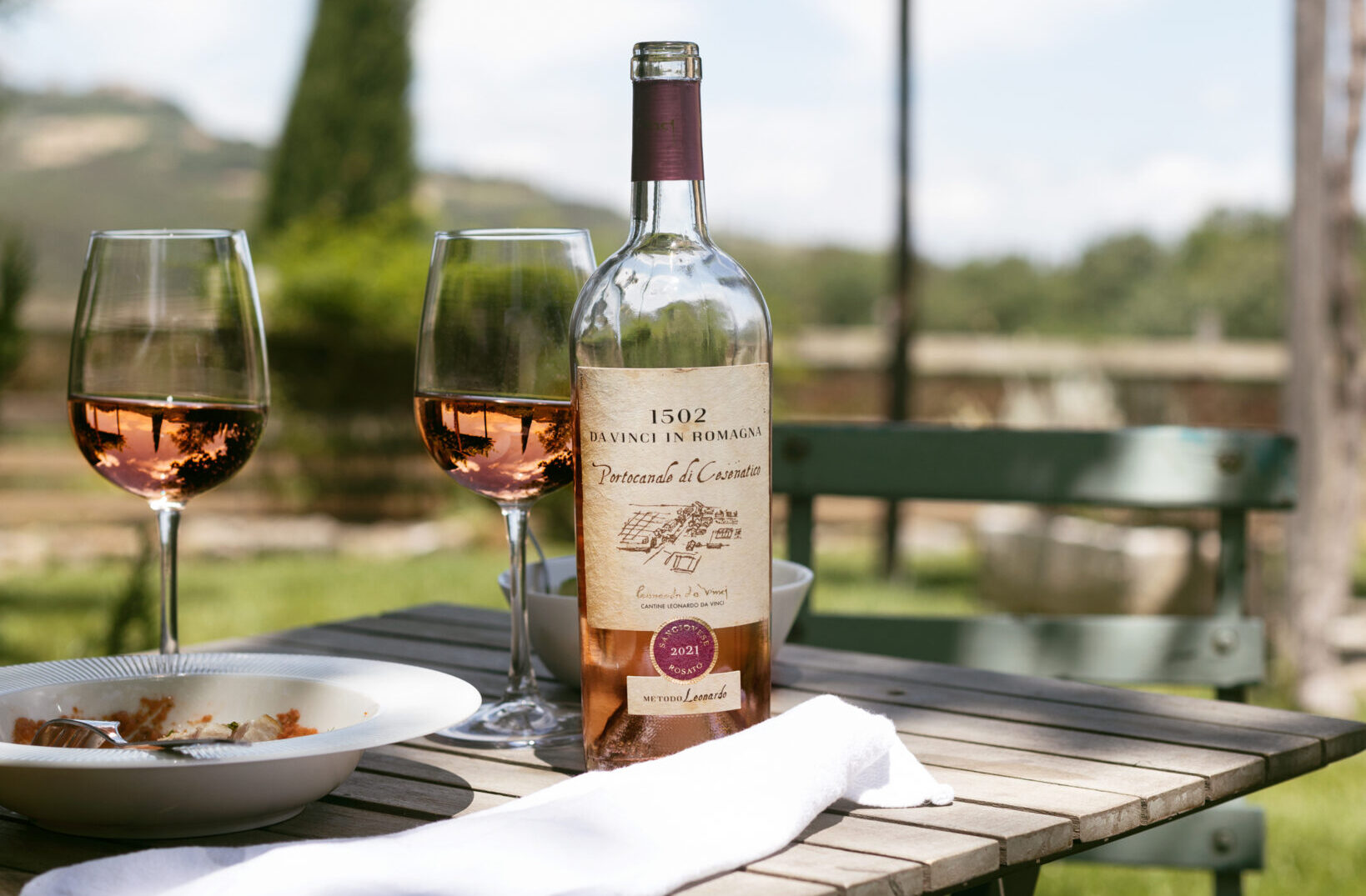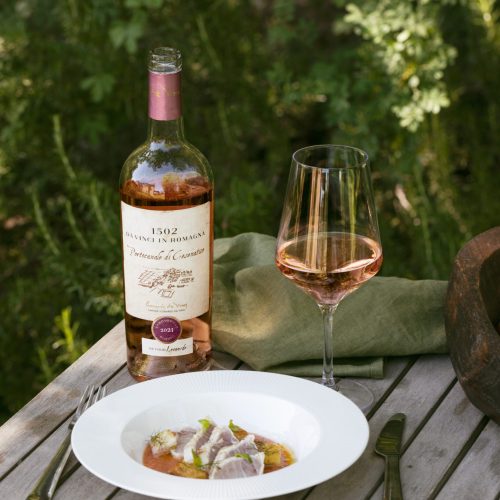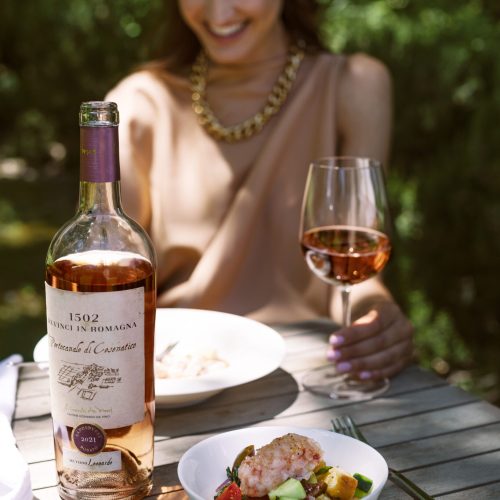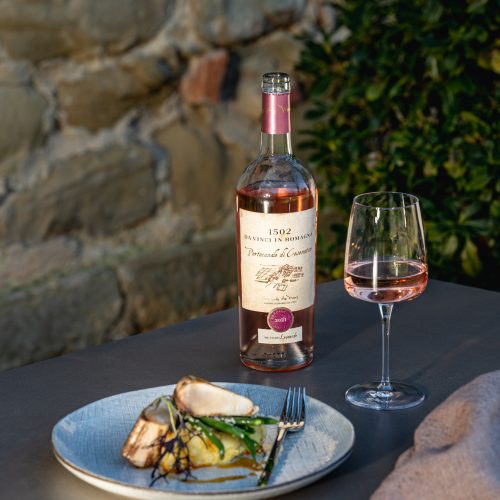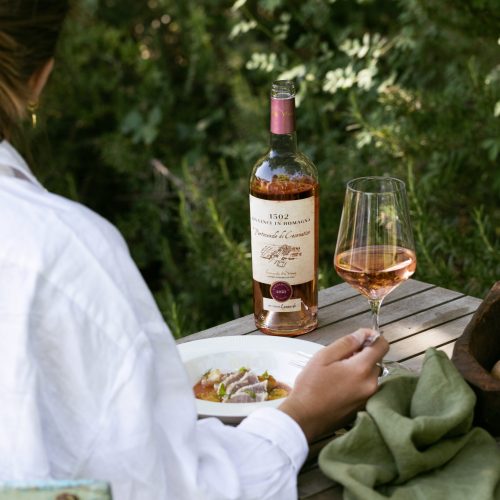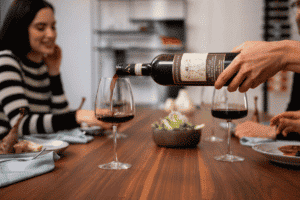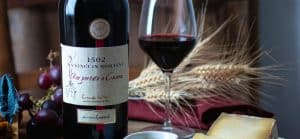When we talk about rosato wines or rosé wines, we indicate wines that are distinctly fresh, fragrant and enjoyable throughout a meal and in combination with different dishes. Thanks to its incredible versatility, you can easily combine a rosé wine with both fish and meat dishes, preferably shellfish and white meats.
How is a rosé wine made?
First of all, let’s dispel an old myth: rosé wine is not made by mixing white and red wines. The characteristic pink color, which can vary from salmon, through pale pink to deep pink, as well as the aroma, is conditioned by the maceration on the skins of red berried grapes, which varies according to the grape variety and the degree of polyphenols present in the skins. If the maceration is minimal (a few hours), a very pale pink ‘onion-skin’ coloured wine will be obtained, while for a deep pink rosé the maceration time could be up to 10 hours.
What are the ideal pairings for rosé wines?
The rosés have a rather fruity and floral scent, while in the mouth they are fresh, balanced, and lightly tannic. Less astringent but more structured than whites, rosé wines are a versatile and often winning solution when the choice between red and white is difficult. In fact, they lend themselves to gastronomic combinations both of fish – appetizers and fish soups, rich but delicate dishes such as a seafood risotto – and meat, passing from cured meats to white meats such as chicken and turkey. Rosé is also excellent in combination with fresh and slightly seasoned cheeses, as well as vegetarian dishes.
Portocanale di Cesenatico: our rosé wine
Our Portocanale di Cesenatico is an excellent rosé to drink all year round thanks to its versatility. A beautiful floral note recalls hints of white peach and apricot. Pleasantly fresh and delicate, balanced, zesty and savory.
Like all the wines of the 1502 da Vinci in Romagna collection, the 100% Sangiovese grapes that make this rosé are grown in the hilly area of Predappio, Castrocaro Terme and Bertinoro, in the heart of Romagna. The collection pays homage to Romagna and the six months that Leonardo da Vinci spent in the heart of this land; a special tour in four cities that Leonardo captured in the drawings made in the various stages of the journey, which are shown on the labels: Cesena, Cesenatico, Faenza and Imola.
Portocanale di Cesenatico: the history of the label
As the name suggests, Portocanale di Cesenatico Sangiovese Rosato recalls the port of Cesenatico, dated 1314 and captured by Leonardo in his sketches during his visit in 1502.
At the request of Cesare Borgia, known as “Il Valentino“, at the head of the Duchy of Romagna, Leonardo was commissioned to check the various infrastructures present in the area, suggesting improvements to the pre-existing sea landing in the city of Cesena: the Portocanale di Cesenatico.
One of the two sketches, the view from above of the seaside village of Cesenatico, is the one that Cantine Leonardo da Vinci has selected and transferred to the label for its rosé wine.
